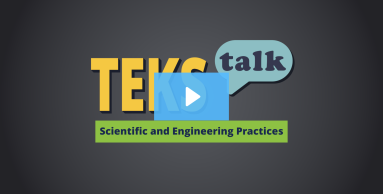- Science
- Grade 9
- Scientific and engineering practices
BIO.4.A

Knowledge and Skills Statement
The further explanation is designed to be a resource for educators that helps them better understand the topic their students are learning. Further explanations may be written at a more complex level than would be expected for students at the grade level.
Engineering practices include using the engineering design process to solve problems. This design process is an instructional method that can be used to teach and apply various concepts in an integrated fashion. Students engage with integrated concepts from multiple disciplines and use design thinking to design a solution to an authentic problem. There are multiple model variations of the engineering design process; however, they all share the basic practices of asking questions or defining problems, brainstorming, planning, creating and testing a design, and improving the design. Throughout the process, students are engaged in problem solving, teamwork, collaboration, and effective communication.
This process is non-linear and iterative. Flexibility within the engineering design process allows a student to return to a step if needed. Analysis and improvement often result in additional questions or problems that can be solved through additional design process iterations.
Research
Kelly, Jacalyn, Tara Sadeghieh, and Khosrow Adeli. “Peer Review in Scientific Publications: Benefits, Critiques, & A Survival Guide.” The Journal of the International Federation of Clinical Chemistry and Laboratory Medicine 25, no.3 (2014): 227 - 243. https://pdfs.semanticscholar.org/0d31/fddf427dda1af008b534fd9d9e35d489b923.pdf
Summary: The current article summarizes the peer review process, highlights the pros and cons associated with different types of peer review, and describes new methods for improving peer review.
